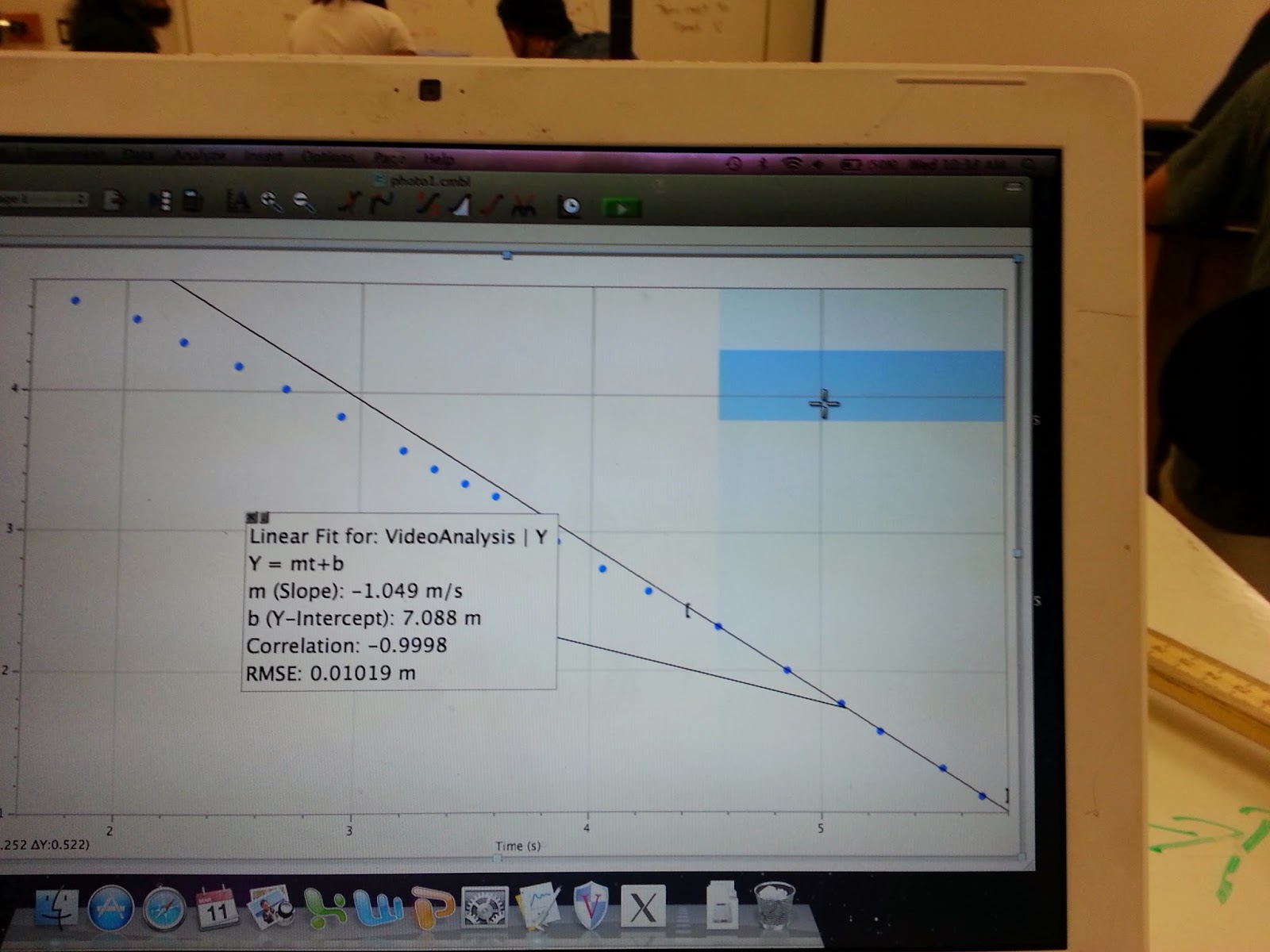Lab 8:Centripetal Acceleration vs. Angular Frequency
Purpose: To determine the relationship between centripetal acceleration and angular speed.
Measurement:
1). How long it takes for disk to make some number of rotation at a range of rotational speed.
2). The accelerometer reading corresponding to each rotational speed.
3). Distance of the accelerometer from the center of the rotation disk.
Set up:
Verity that accelerometer reads 0 in the
x and y directions and -9.81 m/s^2 in the
z direction.
2). Spin the disk at some speed. Verify
that the accelerometer reads 0 in either
the x or the y direction and something
in the other direction.
For this experiments, we can measure radius by hands.
radius r = 14cm
In this experiment, Turing the disk by plug into power and then using different voltage.
By using the centripetal force formula we got
We got the relationship between a and W by this formula, so what we need to do is to test this relationship is true or not.
How we test it:
If the slope of the function a with W^2 is radius or close to radius r, we say this is the relationship between centripetal acceleration and angular speed.
We using our set up to get many sets of a and the period T, if we know T, we can get the W.
Now we begin our experiments, and then we got our data.
This is just one set of data when power is 4.4V
(I am not gonna show all the originally data, but i will write the acceleration and T on piece of paper.)
how do we calculate rotation rate of this graph is choosing the point on the graph such that 1 is one rotation, it cost 1.671584s. Then to make this less untertain. chose 9 points
So rotation rate is f=9/16.461288= rotation/times = 0.5467HZ
for the period T = time / rotations times = 16.461288 / 9 =1.829s
Here is all the acceleration and period combine.
So we can say the relationship between is a = w^2 * r
Uncertainty is U = absolte (0.1361-0.14)/0.14*100% =2.78%
Conclusion:
By get the relationship by our function, we test our function by using our experiments. The results is close to the radius we measured but exactly same because of the uncertainty. In this experiment, the uncertainty can be friction of the disk, the disk not turn one rotation at same rate, and the mistakes made by people. If by trying many times, it's ok to reduce the mistakes; however, the disk is the one made this experiment uncertain such that the equipment is not very accurate. We can see from the data we got compare to one we measured is not very bad, so the uncertainty is not so bad.



















































